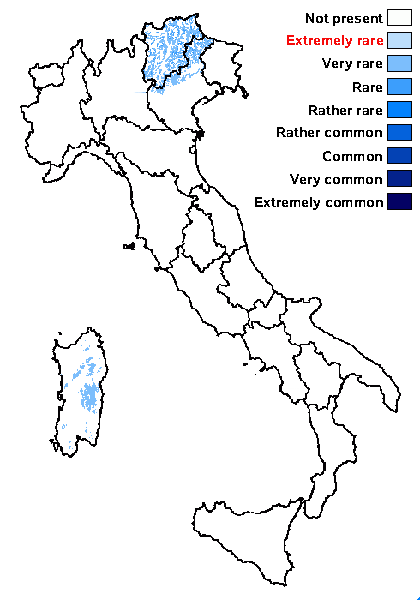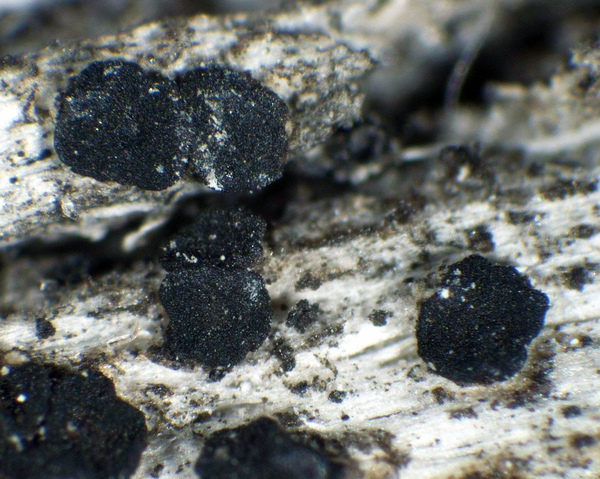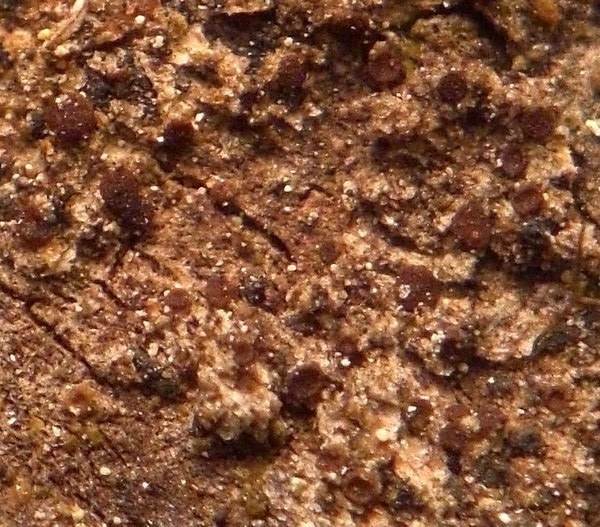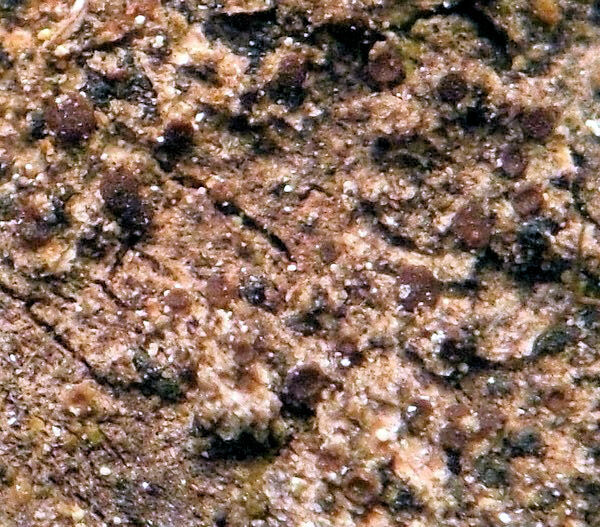Lecanoropsis anopta (Nyl.) Ivanovich & Printzen
in Ivanovich & al., Phytotaxa, 695, 1: 29, 2025. Basionym: Lecanora anopta Nyl. - Flora, 56: 292, 1873.
Synonyms: Lecidea anopta (Nyl.) Lettau
Distribution: N - Ven, TAA (Nascimbene & al. 2007b). C - Sar (Zedda & Sipman 2001, Neuwirth 2018).
Description: Thallus crustose, mostly endosubstratic, rarely superficial and consisting of scattered, conical, white to yellowish white areoles. Apothecia lecanorine only when young, but soon appearing biatorine, rounded, broadly adnate, (0.35-)0.4-0.6(-0.78) mm across, with a ochre or red-brown to black, epruinose to strongly pruinose, flat to strongly convex disc and a thin, white-grey, raised, subrugose and uneven, soon excluded thalline margin; proper margin inconspicuous, cream-coloured, excluded in older apothecia. Thalline exciple usually not developed laterally, the cortex even and gelatinized, (16-)20-50(-59) μm wide at base; proper exciple poorly developed or 40-75 μm wide laterally, strongly gelatinised, with a variable amount of crystals visible under polarized light and dissolving in K; epithecium dark-green or olive-green, with a thin layer of yellowish brown granules, the more strongly pigmented parts N+ red-violet, especially near the margins; hymenium (39-)44-50(-56) μm high, strongly inspersed with yellowish brown granules and with brown to green-black pigment streaks in upper part; paraphyses more or less branched and sometimes anastomosing, 1.5-2 μm thick at mid-level, the apical cells to 2.5 μm wide, the apical gel sheath up to 5 μm wide; hypothecium colourless, (70-)78-140(-155) μm high. Asci 8-spored, clavate, very thin-walled, with a K/I+ blue, tall tholus penetrated by a faintly amyloid apical cushion, the wall K/I-, surrounded by a blue outer layer, Lecanora-type. Ascospores 1-celled, hyaline, ellipsoid to broadly ellipsoid, (7.7-)9-10(-12) x (3.4-)4-5(-6.8)μm. Pycnidia black, semi-immersed, globose or pyriform, with a brown to dark greenish, N+ reddish walls. Microconidia 5-7 x 1.5-2 μm; leptoconidia thread-like, curved, 15-20 x 1-1.5 μm. Photobiont chlorococcoid. Spot tests: thallus K-, C-, KC-, P-, UV-. Chemistry: thallus with isousnic acid; apothecia with the Cinereorufa-green pigment.
Note: on decorticated trunks, more rarely on the bark of conifers in upland areas; probably more widespread in the Alps. For further details see Ivanovich & al. (2025). The sample from Sardinia deviates in having paler apothecia and a yellowish epihymenium.
Growth form: Crustose
Substrata: bark and lignum
Photobiont: green algae other than Trentepohlia
Reproductive strategy: mainly sexual
Commonnes-rarity: (info)
Alpine belt: absent
Subalpine belt: rare
Oromediterranean belt: absent
Montane belt: very rare
Submediterranean belt: absent
Padanian area: absent
Humid submediterranean belt: absent
Humid mediterranean belt: absent
Dry mediterranean belt: absent

Predictive model
Growth form: Crustose
Substrata: bark and lignum
Photobiont: green algae other than Trentepohlia
Reproductive strategy: mainly sexual
Commonnes-rarity: (info)
Alpine belt: absent
Subalpine belt: rare
Oromediterranean belt: absent
Montane belt: very rare
Submediterranean belt: absent
Padanian area: absent
Humid submediterranean belt: absent
Humid mediterranean belt: absent
Dry mediterranean belt: absent

Predictive model





